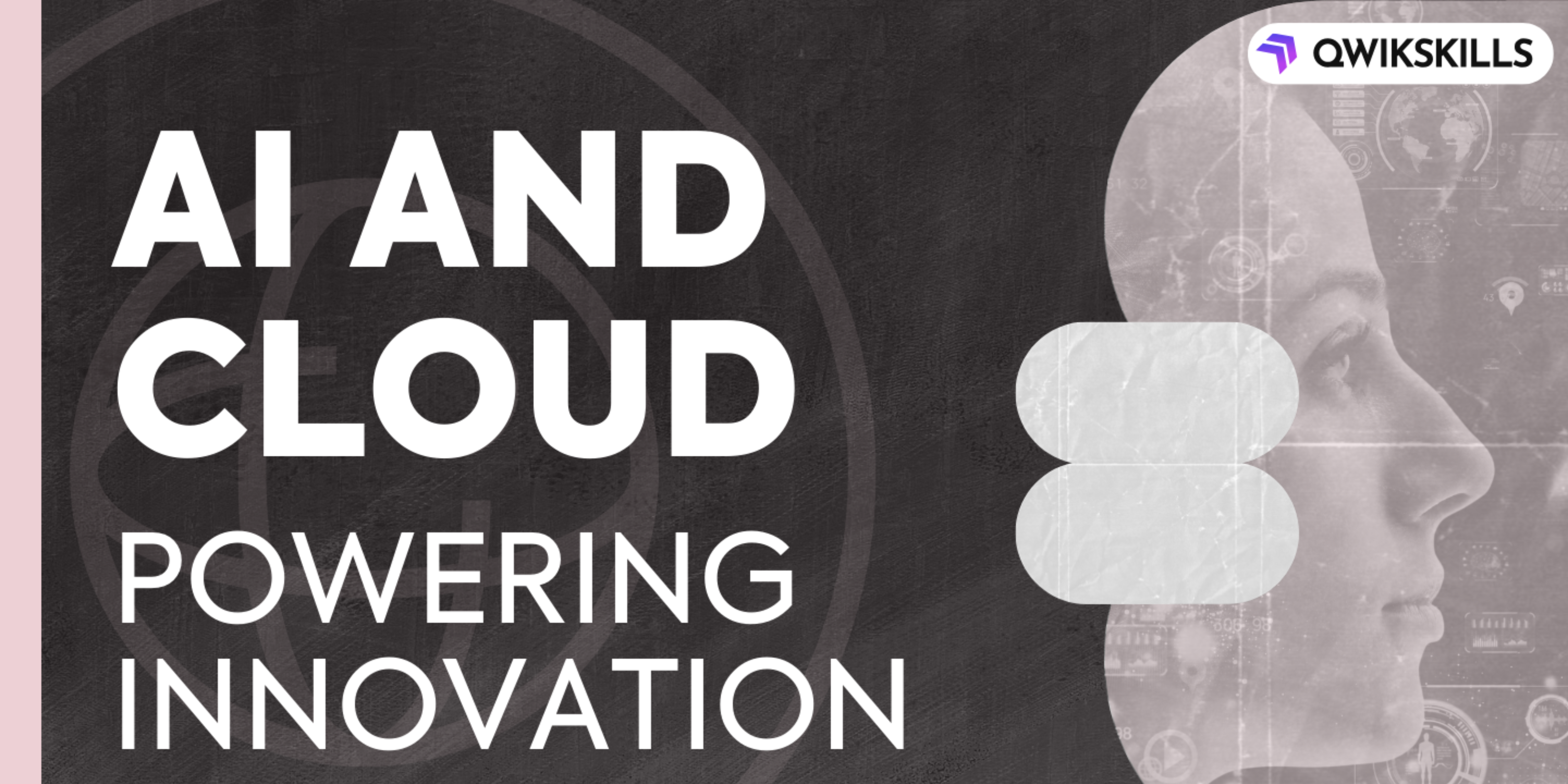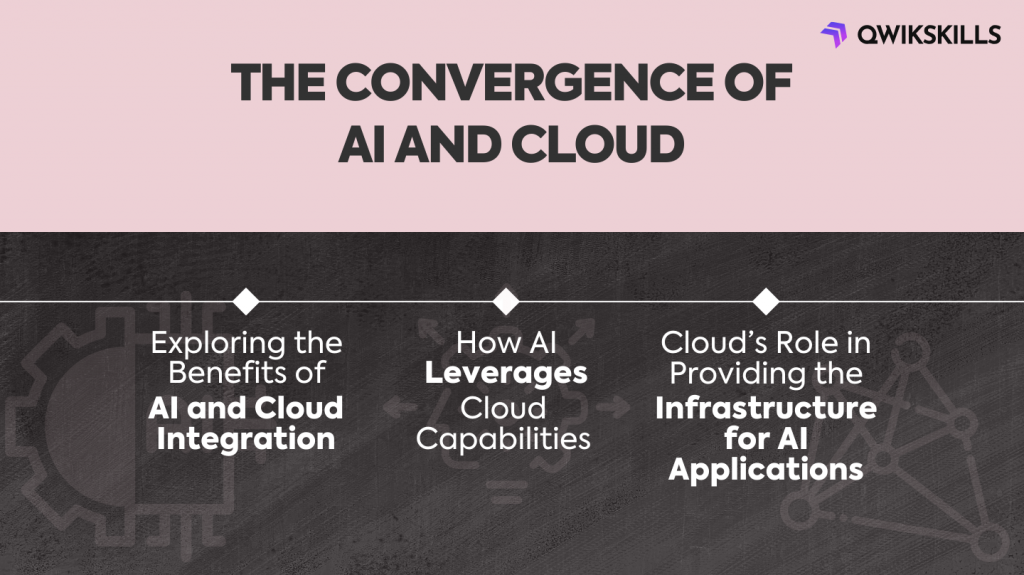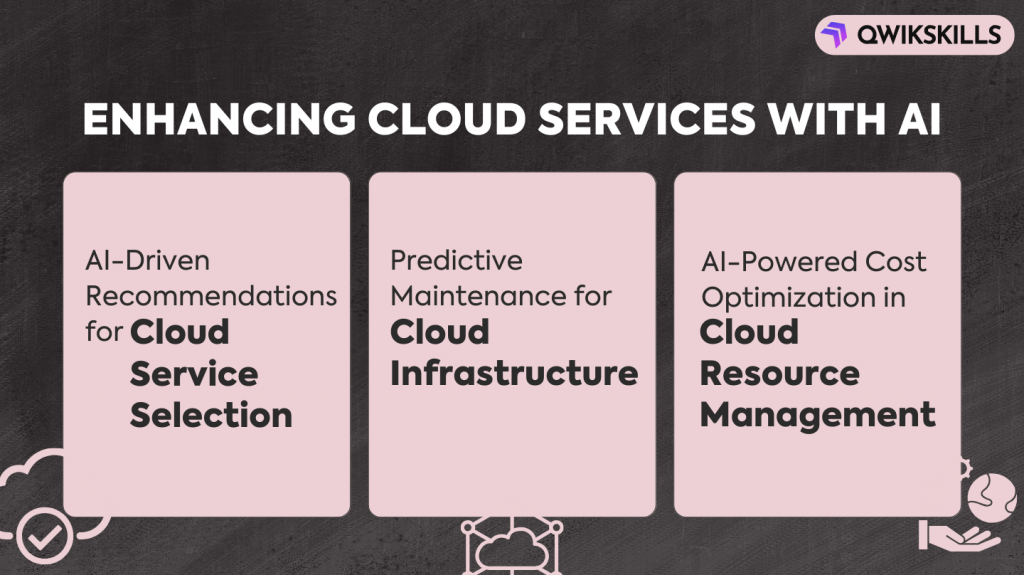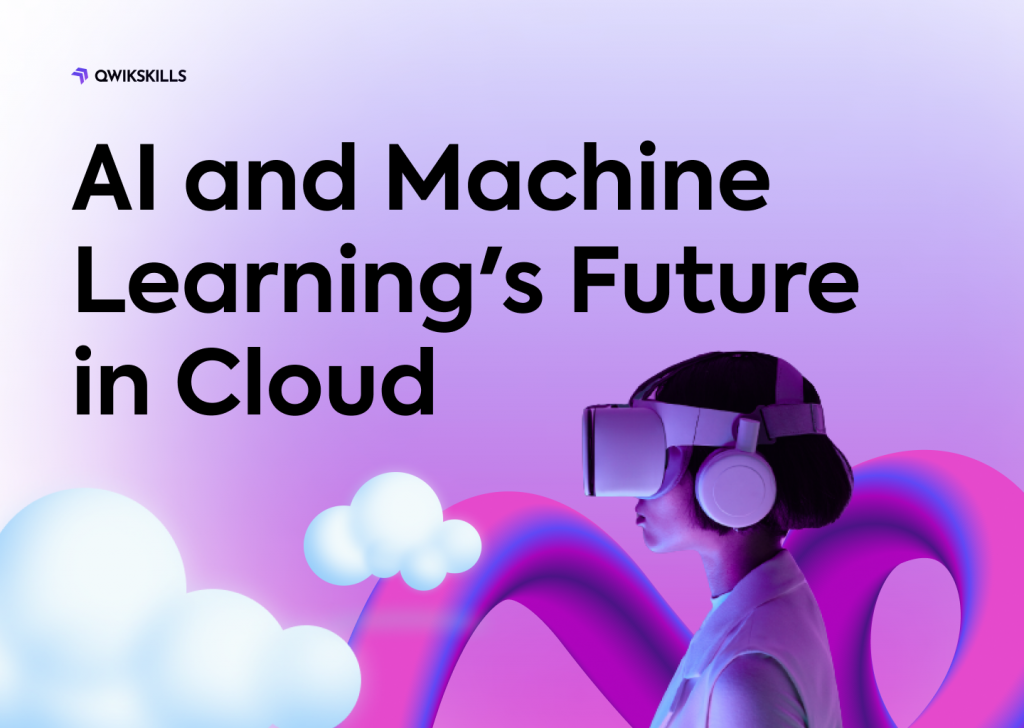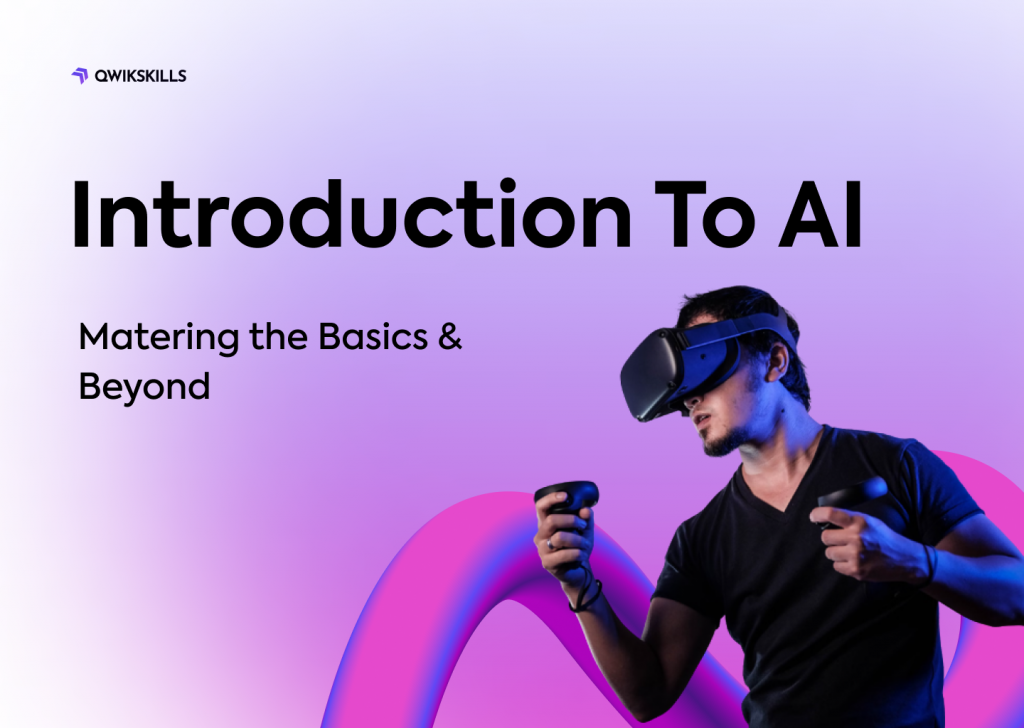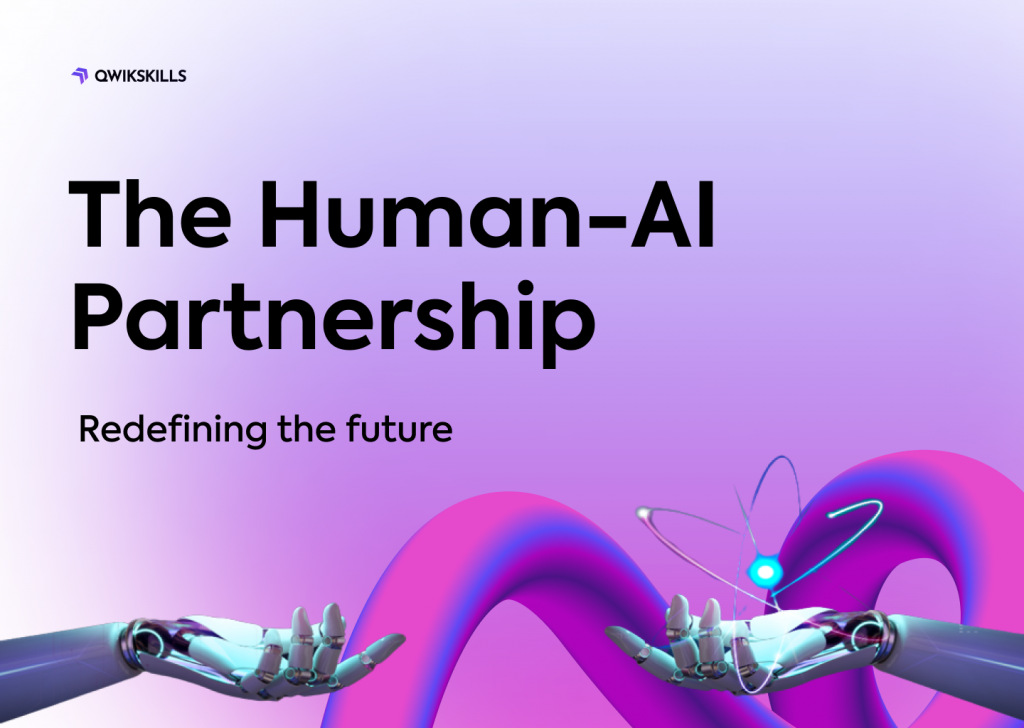In today’s rapidly evolving technological landscape, the integration of Artificial Intelligence and Cloud technologies has emerged as a driving force behind innovation. This harmonious alliance not only empowers businesses with unprecedented capabilities but also paves the way for groundbreaking advancements across various industries. In this article, Discover the fundamentals of AI in our AI Essentials course. Gain practical knowledge and skills to excel in artificial intelligence, the intricacies of Artificial Intelligence and Cloud integration, their components, benefits, challenges, and real-world applications.
Introduction
Artificial Intelligence and Cloud technologies stand as two of the most transformative forces shaping our digital world. AI, the science of simulating human intelligence in machines, encompasses a diverse range of components including Machine Learning (ML), Deep Learning (DL), and Natural Language Processing (NLP). Cloud computing, on the other hand, involves the delivery of computing services—such as storage, processing power, and applications—over the internet. Together, the integration of AI and the Cloud offers a remarkable synergy that has the potential to revolutionize how we approach innovation.
The Symbiotic Relationship between AI and Cloud
At the core of the AI-Cloud synergy lies a symbiotic relationship that amplifies the strengths of each technology. AI’s data-driven insights and cognitive capabilities find a perfect match in the Cloud’s scalable infrastructure and computational prowess. As AI algorithms become increasingly complex, the computational requirements for training and inference grow substantially. Cloud platforms provide the elastic resources necessary to meet these demands, enabling organizations to harness AI’s potential without compromising performance.
Understanding AI and Cloud Technologies
Explaining Artificial Intelligence (AI) and its Components
Artificial Intelligence refers to the capability of machines to mimic human intelligence and decision-making processes. Machine Learning, a subset of AI, empowers systems to learn from data and improve their performance over time. Deep Learning takes this a step further by simulating neural networks, allowing machines to process vast amounts of unstructured data with unparalleled accuracy. Natural Language Processing (NLP) enables machines to understand, interpret, and generate human language, bridging the gap between technology and human communication.
Defining Cloud Computing and its Variants
Cloud computing revolutionizes how businesses approach IT infrastructure. Public Cloud services offer resources on a shared platform, while Private Cloud solutions provide dedicated resources for enhanced security. The Hybrid Cloud model combines the best of both worlds, allowing businesses to optimize resource allocation based on their specific needs.
The Convergence of AI and Cloud
Exploring the Benefits of AI and Cloud Integration
The integration of AI and Cloud brings forth a multitude of benefits that propel innovation forward. AI leverages the Cloud’s computing capabilities to process complex tasks in real-time, enabling applications such as speech recognition, image processing, and predictive analytics. Additionally, the Cloud offers the necessary infrastructure for AI model deployment, ensuring seamless accessibility to users across the globe.
How AI Leverages Cloud Capabilities
AI’s computational requirements can be resource-intensive, often outstripping the capacities of individual machines. Here, the Cloud’s elastic resources play a pivotal role. By harnessing the Cloud’s processing power, AI algorithms can analyze massive datasets, extract insights, and refine models at an accelerated pace. This scalability empowers businesses to tackle complex problems with unprecedented efficiency.
Cloud’s Role in Providing the Infrastructure for AI Applications
The Cloud acts as the backbone for AI applications, offering a reliable and accessible environment for deployment. This eliminates the need for on-premises hardware investments and simplifies the process of scaling AI solutions. Whether it’s a chatbot responding to customer inquiries or a recommendation engine suggesting products, the Cloud ensures the seamless functioning of AI-powered applications.
Applications of AI in Cloud Computing
Optimizing Resource Allocation through AI-Driven Insights
AI’s analytical prowess shines in optimizing resource allocation within Cloud environments. By analyzing historical usage patterns and performance metrics, AI algorithms can predict demand fluctuations and adjust resource allocation accordingly. This predictive approach ensures that businesses never overprovision or underutilize their Cloud resources, resulting in cost savings and enhanced efficiency.
Enhancing Security Using AI-Powered Threat Detection
Security remains a paramount concern in the digital age, and the integration of AI and Cloud offers a formidable defense against cyber threats. AI-driven threat detection systems continuously monitor network traffic, identifying anomalous patterns that might indicate a breach. By leveraging AI’s ability to swiftly analyze vast amounts of data, these systems provide real-time threat identification and response, bolstering the security posture of Cloud environments.
AI-Driven Predictive Analytics for Efficient Resource Scaling
Efficiently scaling Cloud resources to accommodate varying workloads is a challenge that AI is uniquely equipped to address. By analyzing historical usage data, AI algorithms can forecast resource demands, enabling automatic scaling to match requirements. This dynamic resource allocation ensures that applications run smoothly even during traffic spikes, enhancing user experience and minimizing downtime.
Leveraging Cloud for AI Model Development
Utilizing Cloud Resources for Data Storage and Preprocessing
Data lies at the heart of AI, and Cloud platforms offer unparalleled storage capabilities. Storing vast datasets on the Cloud ensures accessibility and availability, facilitating collaborative model development. Additionally, Cloud-based data preprocessing pipelines streamline the data cleaning and transformation processes, enabling data scientists to focus on model refinement rather than mundane tasks.
Distributed Computing for Training Complex AI Models
Training complex AI models demands significant computational resources. Cloud platforms excel in this arena by providing distributed computing capabilities. Organizations can distribute model training tasks across multiple servers, significantly reducing training times. This efficiency accelerates the development of AI models, allowing businesses to innovate faster.
Scalable Deployment and Hosting of AI Applications
Once AI models are developed, deploying them to a global audience becomes seamless with Cloud platforms. Cloud-based deployment ensures low-latency access, regardless of the user’s geographic location. This scalability empowers businesses to launch AI-powered applications that cater to diverse user bases while maintaining high performance and responsiveness.
NLP and Semantic Understanding in AI-Cloud Integration
The Role of NLP in Interpreting User Queries and Commands
Natural Language Processing (NLP) is a cornerstone of AI-Cloud integration, enabling machines to comprehend and respond to human language. Through NLP, users can interact with Cloud-based systems using natural language queries and commands, eliminating the need for complex interfaces. This democratization of interaction enhances user experience and accessibility.
Semantic Understanding for Context-Aware AI Responses
NLP goes beyond mere language interpretation; it encompasses semantic understanding. AI systems equipped with semantic understanding can grasp the context and intent behind user queries, delivering more accurate and relevant responses. This context-awareness enriches user interactions, fostering deeper engagement and satisfaction.
Personalization and User Experience Improvement through NLP
NLP-powered personalization is a game-changer in enhancing user experiences. By analyzing user preferences and behavior, AI systems can tailor recommendations and content to individual users. This level of personalization elevates user engagement, builds loyalty, and drives conversion rates, ultimately benefiting businesses in the Cloud ecosystem.
Enhancing Cloud Services with AI
AI-Driven Recommendations for Cloud Service Selection
The diversity of Cloud services can be overwhelming, but AI steps in to simplify decision-making. AI algorithms analyze business requirements and usage patterns to recommend the most suitable Cloud services. This intelligent guidance empowers organizations to make informed choices, aligning their Cloud strategies with their unique needs.
Predictive Maintenance for Cloud Infrastructure
Maintaining the health of Cloud infrastructure is crucial for uninterrupted operations. AI-enabled predictive maintenance systems analyze performance metrics and detect anomalies that might indicate impending hardware failures. By addressing issues before they escalate, these systems minimize downtime and optimize resource utilization.
AI-Powered Cost Optimization in Cloud Resource Management
Managing Cloud costs can be challenging, especially as infrastructures grow in complexity. AI-driven cost optimization solutions continuously monitor resource usage and spending patterns. By identifying opportunities for cost reduction and efficient resource allocation, these systems help organizations maximize the value of their Cloud investments.
Challenges and Solutions in AI-Cloud Integration
Data Privacy and Security Concerns
Integrating Artificial Intelligence with Cloud technologies raises valid concerns about data privacy and security. Cloud environments host sensitive data, and AI models require access to this data for training and inference. Employing robust encryption, access controls, and anonymization techniques helps mitigate risks, ensuring that data remains protected throughout its lifecycle.
Latency and Real-Time Processing Challenges
Certain AI applications, such as real-time language translation or autonomous vehicles, demand ultra-low latency. Cloud environments can introduce delays due to data transfer and processing times. Edge computing—an approach that involves processing data closer to the source—addresses latency concerns, ensuring real-time responsiveness for AI-powered applications.
Strategies to Address Scalability Issues
Scaling AI-Cloud solutions to accommodate increasing user demands can be intricate. Organizations can adopt microservices architectures and containerization to enhance scalability. These strategies modularize applications, allowing components to scale independently and ensuring optimal performance even during traffic spikes.
SEO-Optimized Innovation Scenarios
“AI and Cloud in Healthcare: Revolutionizing Diagnostics”
In the realm of healthcare, the synergy between AI and Cloud has transformative potential. Imagine a scenario where AI-powered diagnostic tools analyze medical images, detecting anomalies with unprecedented accuracy. Leveraging the Cloud’s processing power, these tools provide real-time insights to healthcare professionals, facilitating faster and more precise diagnoses.
“Smart Cities of the Future: AI-Cloud Synergy in Urban Planning”
In the context of urban planning, the convergence of AI and Cloud technologies promises smarter cities. AI-driven data analysis can optimize traffic flow, energy consumption, and waste management. Cloud platforms support the aggregation and processing of data from various sources, enabling city planners to make informed decisions that enhance quality of life.
“E-Commerce Evolution: AI-Driven Personalization on Cloud Platforms”
E-commerce thrives on customer engagement, and AI-Cloud synergy elevates personalization to new heights. AI algorithms analyze customer behavior and preferences to curate personalized shopping experiences. Cloud resources enable the seamless deployment of these AI-driven recommendations, increasing customer satisfaction and boosting sales.
Conclusion
In the dynamic landscape of technology, the fusion of Artificial Intelligence and Cloud technologies stands as a catalyst for innovation. The AI-Cloud alliance enables organizations to harness the power of data, analytics, and computation to drive transformative advancements across industries. As Artificial Intelligence continues to evolve and Cloud platforms expand their capabilities, the potential for innovation remains boundless. Organizations are encouraged to embrace this synergy, exploring the vast opportunities that arise from the convergence of AI and Cloud, and redefining the boundaries of what’s possible.
Ready to harness the power of Artificial Intelligence and Cloud for innovation? Explore QwikSkills for expert-led courses on AI, Cloud integration, and more. Unlock new possibilities and shape the future of technology-driven solutions today.

